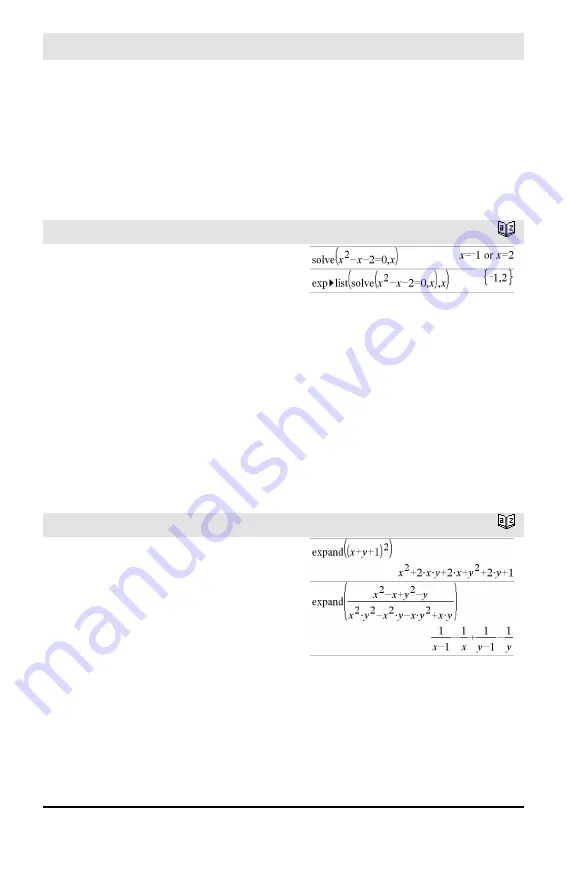
exp()
u
key
Returns the matrix exponential of
squareMatrix1
. This is not the same as
calculating
e
raised to the power of each
element. For information about the
calculation method, refer to
cos()
.
squareMatrix1
must be diagonalizable. The
result always contains floating-point
numbers.
exp
►
list()
Catalog >
exp
►
list(
Expr
,
Var
)
⇒
list
Examines
Expr
for equations that are
separated by the word “
or
,” and returns a
list containing the right-hand sides of the
equations of the form
Var=Expr
. This
gives you an easy way to extract some
solution values embedded in the results of
the
solve()
,
cSolve()
,
fMin()
, and
fMax()
functions.
Note: exp
►
list()
is not necessary with the
zeros()
and
cZeros()
functions because they
return a list of solution values directly.
You can insert this function from the
keyboard by typing
exp@>list(
...
)
.
expand()
Catalog >
expand(
Expr1
[
,
Var
]
)
⇒
expression
expand(
List1
[
,
Var
]
)
⇒
list
expand(
Matrix1
[
,
Var
]
)
⇒
matrix
expand(
Expr1
)
returns
Expr1
expanded
with respect to all its variables. The
expansion is polynomial expansion for
polynomials and partial fraction expansion
for rational expressions.
The goal of
expand()
is to transform
Expr1
into a sum and/or difference of simple
terms. In contrast, the goal of
factor()
is to
transform
Expr1
into a product and/or
quotient of simple factors.
Alphabetical Listing
67
Содержание TI-Nspire CAS
Страница 4: ...4 Service and Warranty Information 249 Index 251 ...
Страница 248: ...248 ...
Страница 250: ...250 ...






























